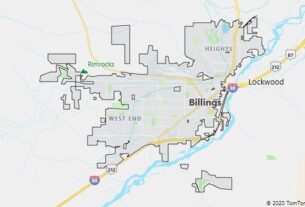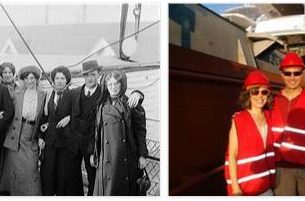Indiana is a US state in the Midwest and Great Lake region of North America. For thousands of years before European settlement, this area was home to diverse cultures of indigenous peoples and ancient Native Americans, giving rise to its name Indiana, meaning ” land of the Native Americans “.
With an area of 94,321 km² and around 6.6 million inhabitants, this state is the 38th largest and 16th most populous state in the United States. Indiana was incorporated into the United States on December 11, 1816 as the 19th state.
Indiana is a very agricultural state, bordered on the north by Lake Michigan and the state of Michigan, on the east by Ohio, on the south Indiana shares the Ohio River as a border river with Kentucky, and on the west is Illinois.
Capital and largest city is Indianapolis. It offers a home for about 855,000 people. The city even has its own nickname “Racing Capital of the World” due to the famous Indianapolis Motor Speedway. Races are regularly held here, such as the legendary Indianapolis 500 race, which has become known as the oldest circuit car race in the world. Another nickname is Circle City, which comes from the many memorials in Monument Circle.
The inhabitants of Indiana are called Hoosier, which is why Indiana is also called “ The Hoosier State ”.
Indiana is home to several major sports teams and sporting events including the NFL Indianapolis Colts, the NASL Indy Eleven, the NBA Indiana Pacers, the WNBA the Indiana Fever and the Indianapolis 500 and Brickyard 400 motorsport races.
Climate & Weather in Indiana
Indiana has a humid continental climate with cold winters and warm, humid summers. In the southern part there is more precipitation than in other parts due to the humid subtropical climate. Temperatures range from -1°C to -10°C in winter. Temperatures vary from 18°C to 32°C in summer.
Indiana attractions
Interesting sights of Indiana are especially the Indianapolis Motor Speedway, the Indianapolis Zoo and the huge Horseshoe Hammond Casino. There are also many interesting monuments and museums here.
UNESCO world heritage
The state of Indiana has neither a UNESCO World Heritage Site nor a UNESCO World Natural Heritage Site.
Indiana National Park
There are no national parks in the state of Indiana.
Cities and places of interest in Indiana
Indianapolis
Fort Wayne
Evansville
South Bend
Hammond
Gary
Universities & Colleges in Indiana
Purdue University in West Lafayette
University of Notre Dame
Indiana University in Bloomington
Ball State University in Muncie
University of Southern Indiana in Evansville
Vincennes University
Airports in Indiana
Indianapolis International Airport / IND (largest airport in Indiana)
South Bend Regional Airport / SBN
Fort Wayne International Airport / FWA
Evansville Regional Airport
Rivers & Lakes in Indiana
Ohio River
Maumee River
Iroquois River
Kankakee River
White River
Wabash River
Lake Michigan
Lake Maxinkuckee
Lake Monroe
Lake Shafer and Lake Freeman
Lake Wawasee
Tippecanoe Lake
Indiana Mountains
The highest point is Hoosier Hill in Wayne County in eastern Indiana at 383 m.
Indianapolis Museum of Art at Oldfields Manor
The Indianapolis Museum of Art, also IMA, is an encyclopedic art museum in Newfields, Indiana. It is the ninth oldest and the eighth largest museum of encyclopedic art in the United States.
Its collection includes over 54,000 works including African, American, Asian and American European exhibits, Neo-Impressionist paintings, Edo period Japanese paintings, Chinese ceramics and bronzes; paintings, sculptures and prints by Paul Gauguin and the Pont Aven School; a large body of work by JMW Turner and a growing contemporary art collection. Other focal points of the Indianapolis Museum of Art are textiles and fashion art, as well as modern design.
Visitors come here to admire the extensive art historical collections from different eras from all over the world. Depending on the season, changing exhibitions, courses, guided tours and events that change seasonally also take place here.
Overall, the Oldfields property is described as a total work of art that brings together the arts of landscape design, gardening, architecture, interior design and the decorative arts.
History of the Indianapolis Museum of Art
In 1883 the museum was founded by the Art Association of Indianapolis, under an open membership group, headed by suffragist May Wright Sewall, her husband Theodore, and a small group of art enthusiasts.
It was opened in 1906 as the first permanent museum, as part of the John Herron Art Institute. The aim of the Art Association of Indianapolis was to inform the public about fine arts and to give art classes. The Kunstverein’s first exhibition, which opened on November 7, 1883, contained 453 works of art by 137 artists. She was a great success.
In 1895, wealthy Indianapolis resident John Herron died, leaving his legacy to build a gallery and school that would bear his name. In 1902 the John Herron Art Institute was opened, with a focus on applied arts.
The museum’s collection has grown steadily over the years. In 1927, for example, a group of 16 citizens interested in art donated works by Henri de Toulouse-Lautrec, Amedeo Modigliani, Maurice Prendergast and Henri Matisse.
Art Association of Indianapolis President Caroline Marmon Fesler donated works by Meindert Hobbema, Aelbert Cuyp, Corneille de Lyon, Georges Seurat, Paul Cézanne, Vincent van Gogh, and Pablo Picasso to the museum. In addition, Eli Lilly donated around 200 Chinese bronze, ceramic and jade works from 1947 to 1961.
In the mid-1960s, a new, larger location for the Indianapolis Museum of Art was sought. Ruth and Josiah K. Lilly donated their Oldfields estate to the museum in 1966 as a new location. The former residence of her parents offered enough space for a new museum building and further future expansions.
In 1967 the art school and museum were separated. The art school was affiliated with Indiana University-Purdue University Indianapolis as the Herron School of Art and Design. That same year, Oldfields opened to the public as the Lilly Pavilion of Decorative Arts, with an arts and crafts exhibit.
In 1969, the Art Association of Indianapolis was renamed the Indianapolis Museum of Art. Over time, the site was expanded and enlarged.
The museum is widely recognized as innovating in the development of open source technologies, institutional transparency and collaboration between museums. In 2008, IMA became the first art museum to be named an Energy Star Partner for its greening initiative and efforts to reduce energy use.
In 2009, IMA received the National Medal for Museum and Library Service, for the museum’s free admission and for the educational programs it provides.
Architecture of the Indianapolis Museum of Art
In 1960, board members of the Art Association of Indianapolis discussed the idea of placing the museum at the center of a new cultural campus. Inspired by the University Circle in Cleveland, Ohio. In addition, the idea of building an acropolis came up. The first pavilion, the Krannert Pavilion, was opened in 1970 as the first of four buildings on the museum grounds. The Clowes Pavilion followed in 1972 with the Clowes’ collection of old masters. In 1973 the Showalter Pavilion and the Sutphin Fountain were added.
Another pavilion opened in 1990, the Hulman Pavilion, which housed the Eiteljorg collection of African and South Pacific art.
From the mid-1990s to 2005, many of the first pavilions were renovated. The renovations enabled the gallery area to be expanded to up to 15,200 square meters.
Historical objects on the Indianapolis Museum of Art grounds
Oldfields is a 110,000 square foot historic property and house museum on the grounds of the Indianapolis Museum of Art. After restoration in the 1990’s, the property was designated a US National Historic Landmark in 2003. Oldfields was originally built between 1910 and 1913, by architect Lewis Ketcham Davis. Today, the 22-room mansion is interpreted to reflect the 1930’s era.
Miller House and Garden
The Miller House is a mid-century modern home designed by Eero Saarinen. The residence was commissioned in 1953 by American industrialist, philanthropist, and architecture patron J. Irwin Miller and his wife, Xenia Simons Miller. The home was designated a National Historic Landmark in 2000.
Westerley House and gardens
Westerley House is south of the museum in the Golden Hill district and is the former home of Dr. George HA Clowes. Built in 1922, the four-story home consists of 20 rooms plus a coach house, greenhouse and surrounding grounds. Allen Clowes died in 2000 and bequeathed the property to the museum.
Indianapolis Museum of Art
The Indianapolis Museum of Art is located on a large college campus at 4000 N. Michigan Road and W. 38th Street, near downtown Indianapolis, northwest of Crown Hill Cemetery.
The address of the Indianapolis Museum of Art attraction
Indianapolis Museum of Art
4000 N Michigan Rd
Indianapolis, IN 46208
United States



